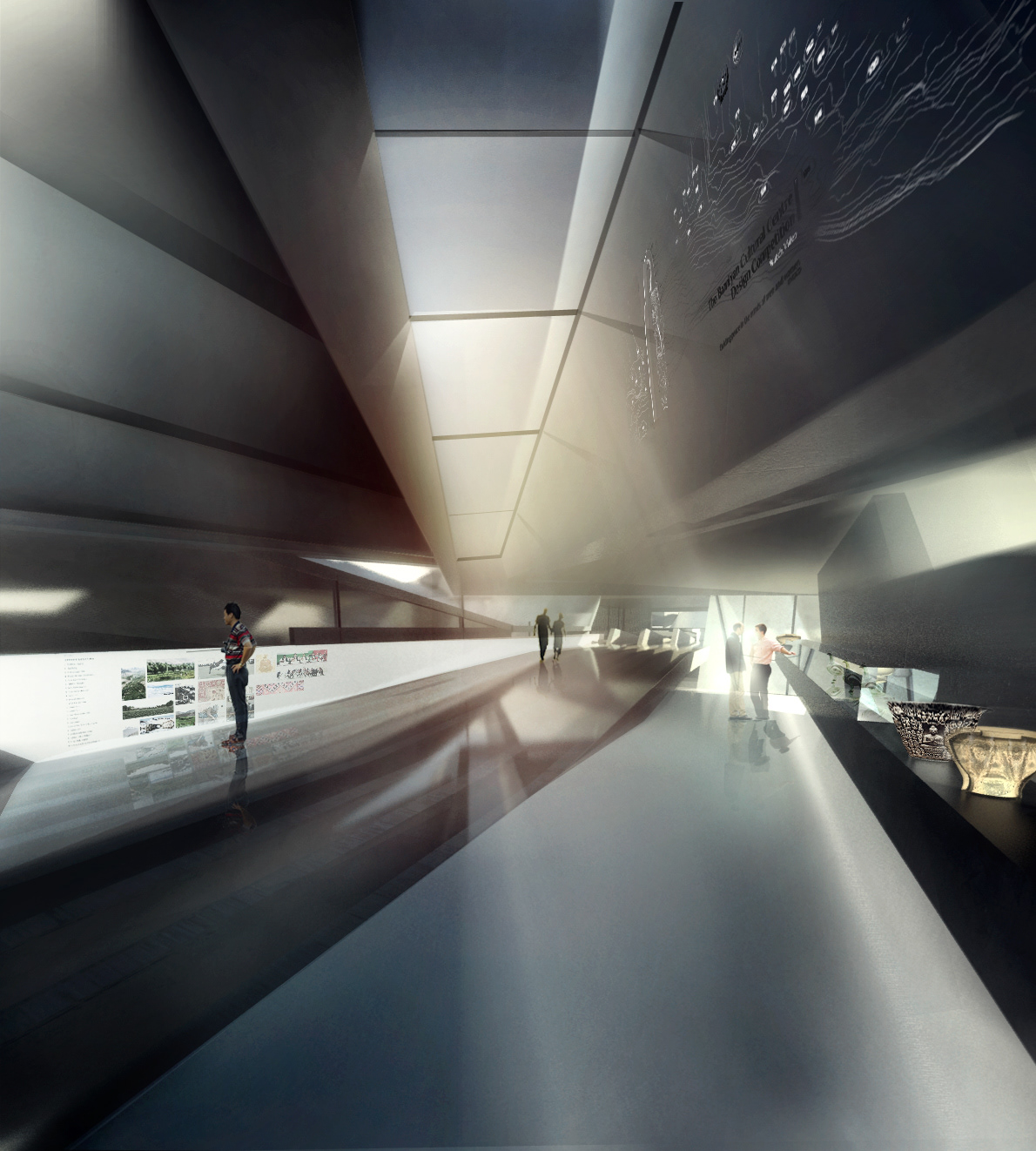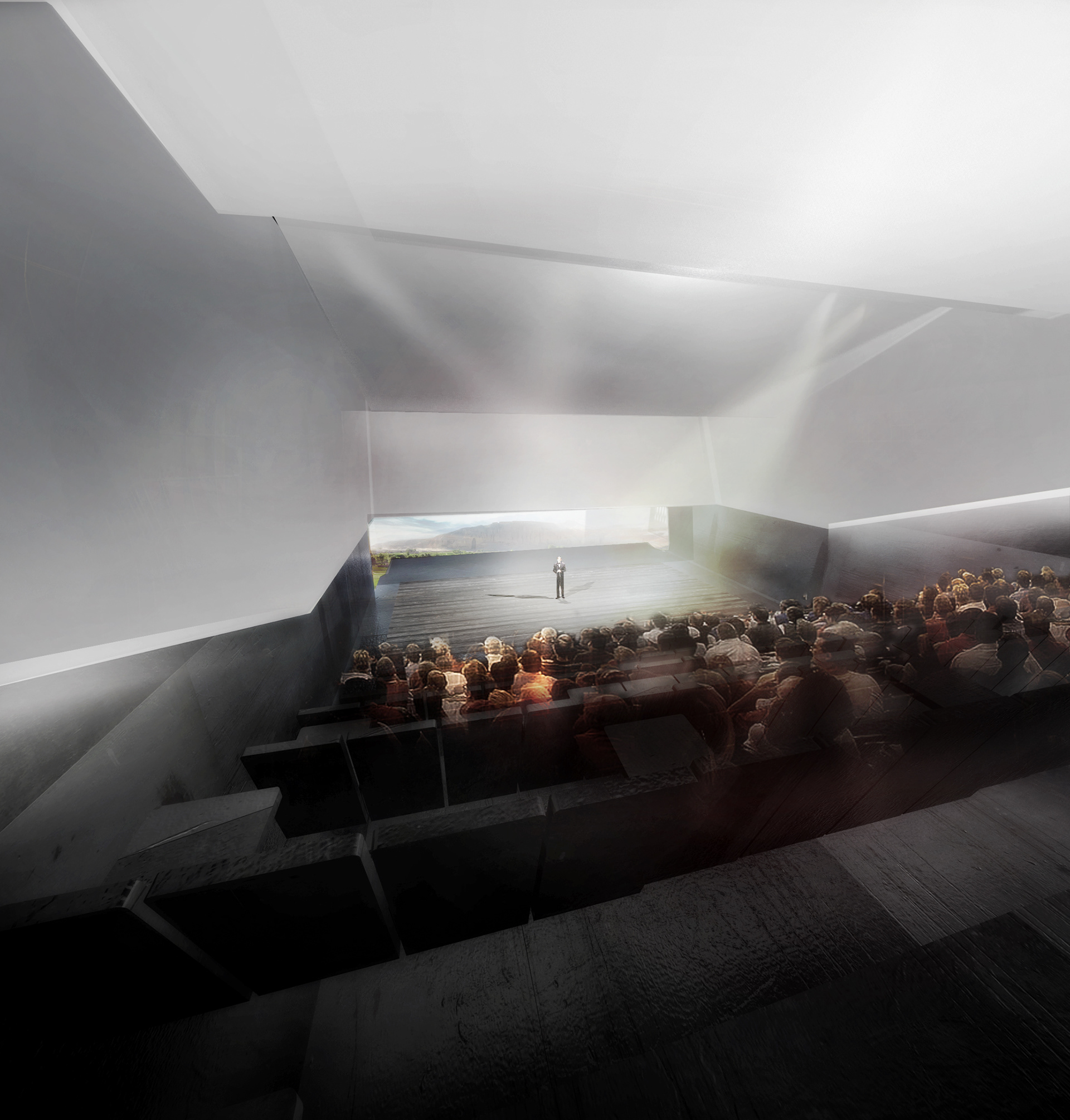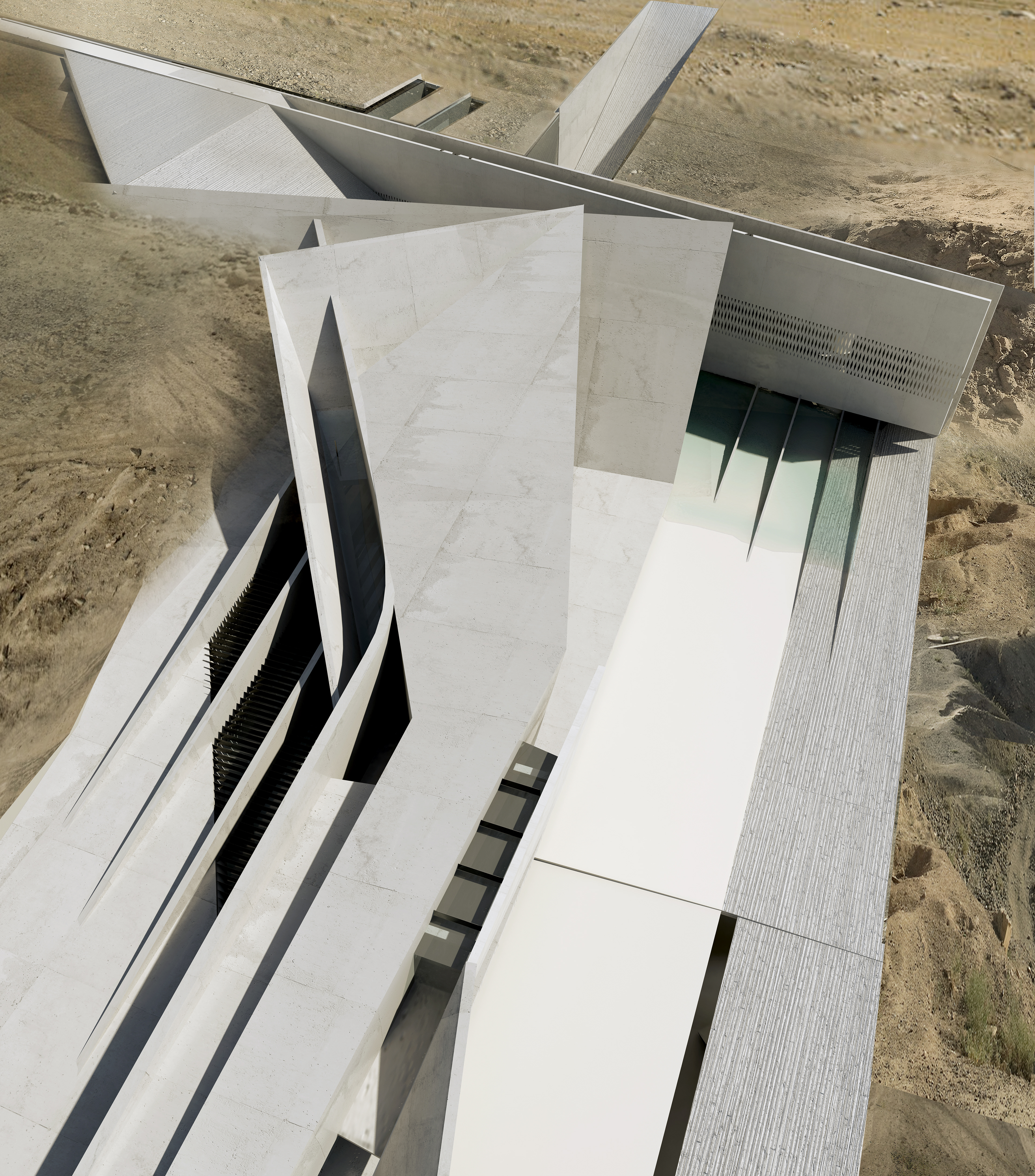LOCATION YEAR TYPE STATUS SIZE BAMIYAN 2015 CULTURAL COMPETITION 2.430sqm AFGHANISTAN
ARCHITECTS DESIGN TEAM ZAPANTIOTIS FOTIS ZAPANTIOTIS FOTIS PAPANAGIOTOU STATHIS PAPANAGIOTOU STATHIS MICHAILIDIS KAROLOS
The Bamiyan landscape embeds a strong flow of ‘energies’ and ‘tensions’. Analysing the scape of Bamiyan Valley, we interpret two contrasting readings: a field of energy flows, dissipated and scattered in the landscape; and a unitary collection of strong focal points as vessels (the two Buddha niches) capturing the gaze of the visitor. The traces of memory of the ‘Silk Road’ is still prominent and inscribed in the landscape, leaving an imprint of a dynamic force that penetrates the site. While, the Buddha niches act as static collectors of these energies.
The uniqueness and speciality of the place asks for a careful and systematic approach. We consider appropriate to articulate a cultural building that will organize the fields of view and its forces, representing a contemporary reality through the creation and proposal of a new experience. The Bamiyan Cultural Centre supersedes the notion of a building as a ‘cell’ that could be positioned in any location, and proposes a new reality based on the axis and flows given from site, breaking the boundary between what is interior and what is exterior. The purpose of the proposal is not to outshine and compete with the rich history and monumentality of the place and the Buddha cavities, but create a building as a vehicle of culture and heritage, complementing and creating a dialogue. A building that aims to organize and illuminate both the cultural treasures of Bamiyan, and also to combine different trends, affinities and orientations, promoting an intercultural interaction in the scope of research and learning.
The selected project site has a prominent position, overseeing the valley and being in direct dialogue with the genius loci. The extruded topography of the site is of extreme importance to us, making it both physically and socially an elevated public square.
The chosen plot becomes the intermediate link or canvas, balancing between the panoramic view and the building proposal. The importance of the topography and location of the site in relationship to the bigger picture of Bamiyan became our design intent and informed the main axis of our building and the assimilation of the landscape in it.
The slopes, contour lines, sides of the landscape and unfolding surfaces become our architectural reading and perception of the hill and defines the principles that lies behind our design. The plot is set in two levels (diagram 1). We do not see this height difference as a strict border but as a cavity-receiver of our proposal. Two transverse fields of forces are identified. On the one on the North-South axis two opposing forces converge. A force from the lowest point of the plot tends to reach the highest trough a slope that acts as an extension of the lower level and as an intelligible continuation of the site as a whole (diagram 2).
While the East-West axis penetrates trough the plot, directing the view from the valley towards the unfolded elevation of the Buddha Cliff.
Following the gesture of the North-West tension, we crease the ground to create a shell, a second surface (diagram 3). Intensifying the existing ‘basin’_receiver, the unfolded surface becomes the public square and on top of it is seated the solid programmatic complex of spaces (diagram 5). Given the specificity of the hill and its two distinct levels, the relationship between landscape and building is expressed in a sense of solids and voids. On the lower level of the plot the building sits above the public square, restoring the artificial void/hollowness of the hill, creating a new threshold.
Whereas in the higher level of the plot the earth is carved which allows us to follow the contour heights of the site and preserve the physical appearance of the hill avoiding a building upsurge. The continuous movement is used as a design tool creating an unobstructed and extensive flow throughout the building with programmatic alternations, interior and exterior and solids and voids.
The scope of the visitor descending the site from East to West through the building is centred on the Buddha Cliff (diagram 4). A narrated promenade that takes the visitor through a rich spatial experience, beginning from the cityscape and leading to a multicultural world with many layers of history and modes of expression, expanding to the point where it all began, and bringing him back to the present. The entrance of the Bamiyan Cultural Centre is placed on the intersection of the two axes which sets the starting point of the visitor’s dérive. The fluidity of the spaces, is gradually revealed to the visitor, while the torsional circulation, forces the body to rotate and constantly change direction and perspective, intensifying the unexpected and revealing constantly new angles of the building.
We first articulated the building into a base, middle and top, which are designed around the specific needs of each part of the programme (diagram 5) . The base of the building, as the extension of the exterior public square, contains the entrance hall and reception, the temporary and permanent exhibition spaces and the supporting facilities (Tea House, shop, Research centre). A glazed ramp creates a route that hosts the permanent exhibits and distinguishes and separates it from the temporary exhibitions.
The top part, which consists of the classrooms, rotates gently opening up the field of view to the two Buddha cavities. The transparent enclosure of the ground level, provides ideal light for sculpture in direct view to the Buddha Cliff, using the most contemporary glass technology to protect the gallery against excessive heat and excessive light. The conditions animating the exhibition spaces revolve around natural light. The Bamiyan Cultural Centre could be described as an environment of ambient natural light.
In contrast to the more fluid positioning of spaces, on the East-West axis we inline a linear solid element strictly defining a boundary. This element creates a front to the public square and it embeds the static functions of the amphitheatre, the workshops and the offices. Being carved into the rock, these spaces are arranged in juxtaposition to inline patios/courtyards. This gives to all users of the building, a personal outdoor space.




